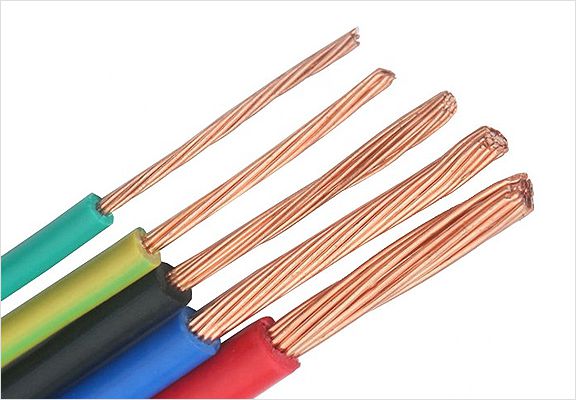Introduction:
In modern society, electrical systems and wiring play an integral role in our daily lives. From residential buildings to industrial facilities, the demand for efficient and reliable power transmission continues to increase. However, with the growing complexity of electrical infrastructure, the risk of potential hazards, such as fires, has become a major concern. To address this issue, the development of flame retardant control cables has emerged as a crucial safety measure. This article delves into the significance of flame retardant control cables, their construction, applications, and the standards that govern their usage.
1. Understanding Flame Retardant Control Cables:
1.1 Definition and Purpose:
Flame retardant control cables are specialized cables designed to inhibit or delay the propagation of fire. They are used in electrical systems to ensure the safety of personnel, protect valuable equipment, and minimize damage caused by fire incidents. These cables are engineered to withstand high temperatures and reduce the risk of fires caused by electrical faults or external factors.
1.2 Construction and Components:
Flame retardant control cables are manufactured using a combination of fire-resistant materials and design techniques. The key components of these cables include conductors, insulation, shielding, and a protective outer sheath. The conductors are typically made of copper or aluminum, ensuring efficient power transmission. The insulation, commonly composed of PVC (Polyvinyl Chloride) or XLPE (Cross-Linked Polyethylene), provides electrical insulation and fire resistance. The shielding layer minimizes electromagnetic interference (EMI) and enhances cable performance. Lastly, navigate here protects the cable from mechanical stress, moisture, and chemical agents.
2. Applications of Flame Retardant Control Cables:
2.1 Industrial Sector:
Flame retardant control cables find extensive applications in industrial settings, where there is a high concentration of electrical equipment and machinery. These cables are commonly used in power generation plants, manufacturing facilities, oil refineries, and chemical plants. The inherent fire-resistant properties of these cables make them ideal for critical applications, such as control systems, motor circuits, and instrumentation circuits.
2.2 Commercial and Residential Buildings:
Ensuring fire safety is crucial in commercial and residential buildings, where the risk of fire incidents can have catastrophic consequences. Flame retardant control cables are employed in various applications within these structures, including fire alarms, emergency lighting systems, HVAC (Heating, Ventilation, and Air Conditioning) systems, and access control systems. The use of flame retardant cables significantly reduces the risk of fire propagation, allowing occupants to evacuate safely in case of emergencies.
2.3 Transportation Sector:
The transportation sector also relies on flame retardant control cables for safe and reliable operation. These cables are used in railway systems, airports, seaports, and automotive applications. In critical areas such as signaling systems, power distribution, and control panels, flame retardant control cables ensure uninterrupted operation and mitigate the risk of fire-related accidents.

3. Standards and Regulations:
To ensure the quality and safety of flame retardant control cables, various international and national standards have been established. The most widely recognized standard is the International Electrotechnical Commission (IEC) standard, which sets guidelines for cable construction, performance, and fire resistance. Additionally, regional standards, such as the European Union's Construction Products Regulation (CPR) and the American National Standards Institute (ANSI) standards, provide specific requirements for the fire performance of cables used in different applications.
4. Advantages of Flame Retardant Control Cables:
4.1 Fire Safety:
The primary advantage of flame retardant control cables is their ability to resist the spread of fire. By minimizing the risk of fire propagation, these cables provide additional time for evacuation and reduce potential damage to property and infrastructure.
4.2 Enhanced Durability:
Flame retardant control cables are designed to withstand harsh environments, including exposure to high temperatures, chemicals, and mechanical stress. https://www.jiangyuancables.com ensures long-term reliability and minimizes the need for frequent cable replacements.
4.3 Reduced Toxicity:
In the event of a fire, conventional cables can release toxic gases and smoke, posing significant risks to human health. Flame retardant control cables are engineered to emit lower levels of toxic gases and smoke, thereby reducing the potential harm to occupants and emergency responders.
4.4 Compliance with Safety Standards:
By utilizing flame retardant control cables that meet international safety standards, electrical system designers and installers can ensure compliance with regulatory requirements. This adherence to standards enhances the overall safety of electrical installations.
5. Conclusion:
Flame retardant control cables are a crucial component of modern electrical systems, providing a vital layer of protection against fires. These cables showcase enhanced fire resistance, durability, and compliance with safety standards. Their widespread applications in industrial, commercial, and transportation sectors contribute to safer environments and reliable power transmission. As the demand for fire safety continues to grow, the importance of flame retardant control cables in ensuring the safety and reliability of electrical systems cannot be overstated.
